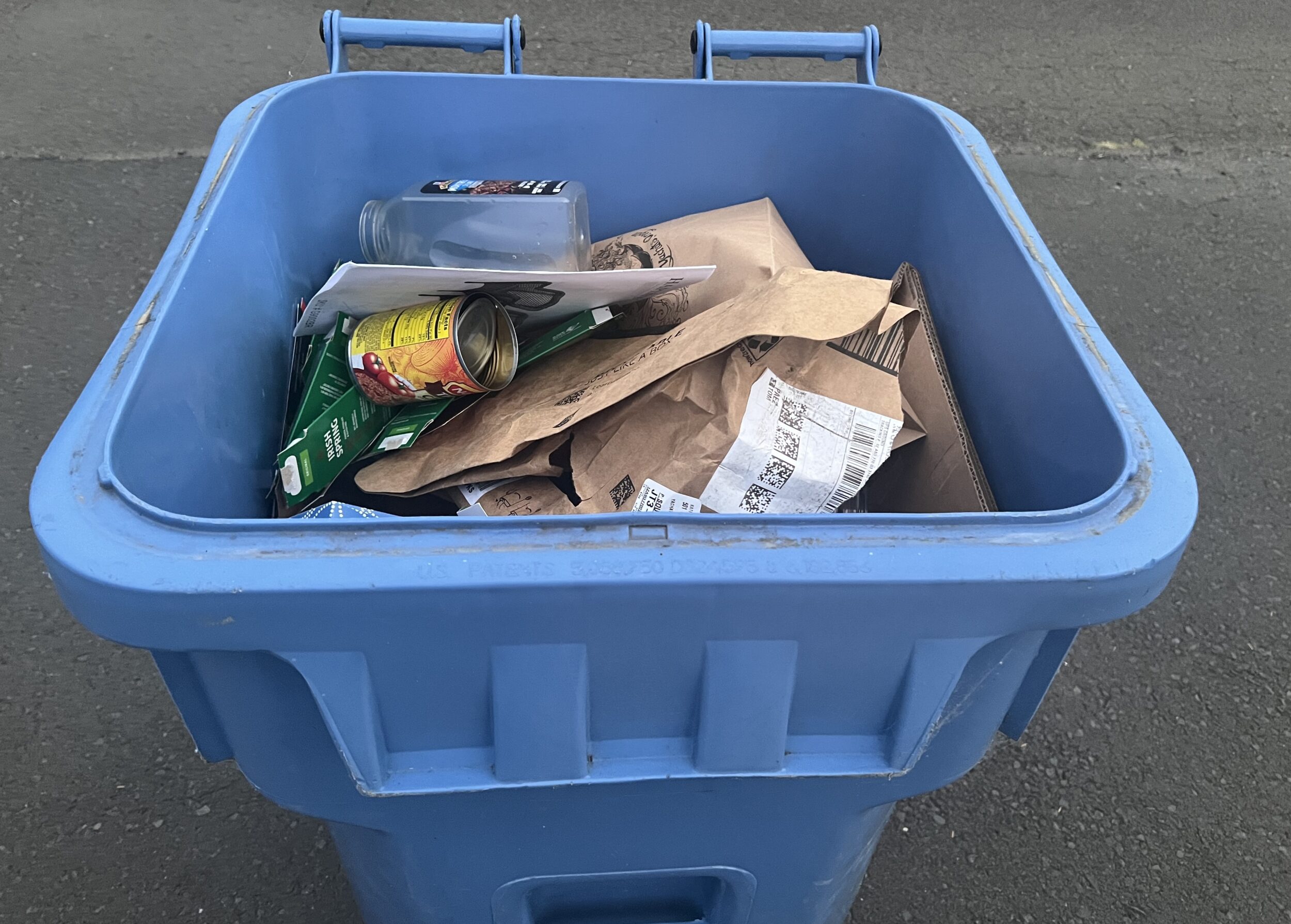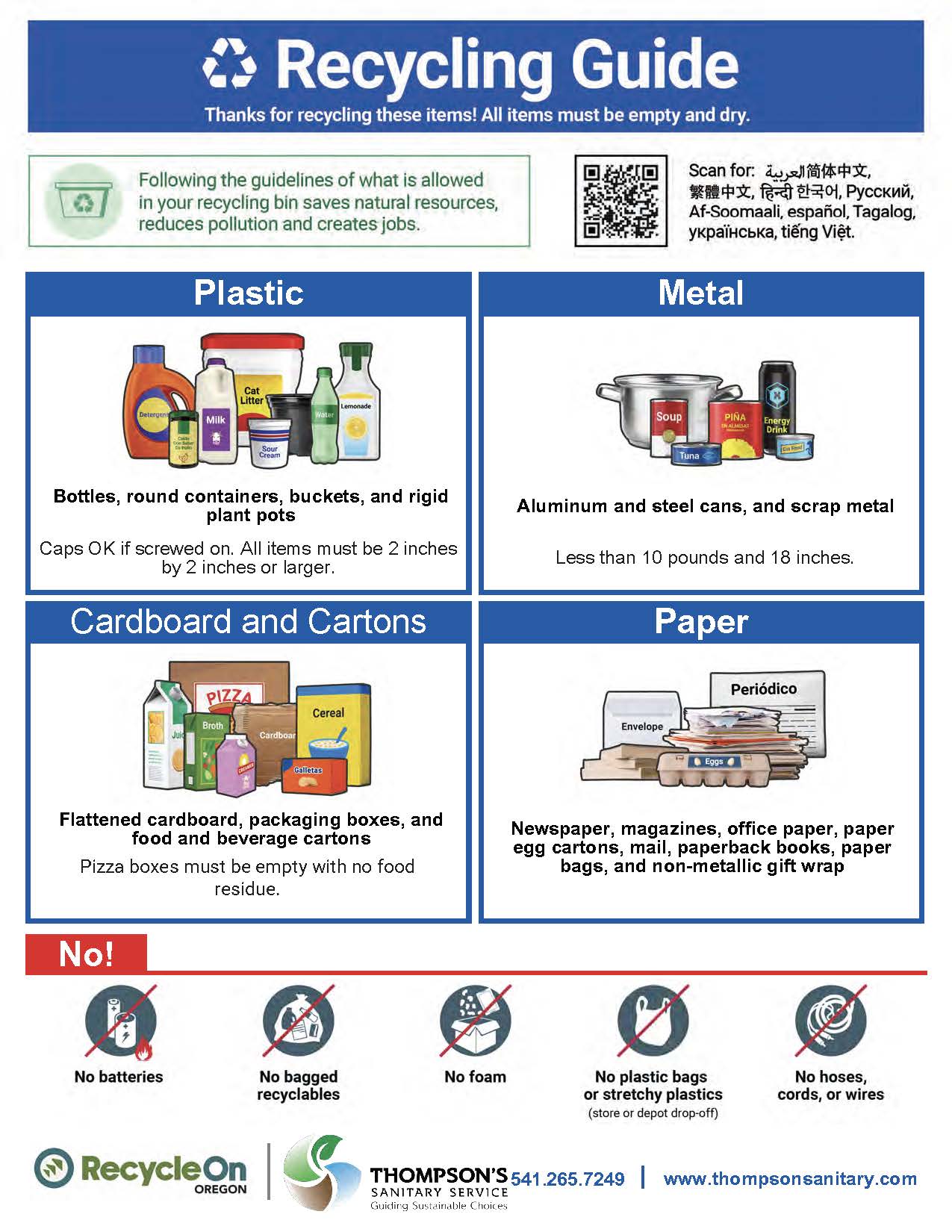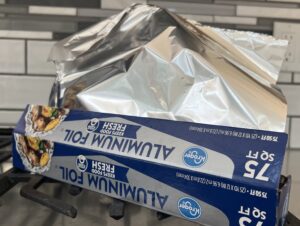
By GARRET JAROS/Lincoln Chronicle
The good news for residents of Lincoln County who have curbside recycling pickup is that they will soon be able to add yogurt and margarine tubs, milk cartons made of paper – even the ones with plastic pour spouts — soup boxes, buckets for cat food and litter and twist off caps.
But hold on. There’s a catch.
Despite the passage of Oregon’s Recycling Modernization Act in 2021, which ushered in the changes and officially takes effect July 1 – it is going to take a while longer for haulers in Lincoln County and across the state to get all the pieces in place.
Which means that until further notice from individual haulers, customers of North Lincoln Sanitary Service, Thompson’s Sanitary Service and Dahl Disposal Services, should stay the course with recycling the usual suspects.
But hold on. There’s another catch.
Two things that are currently accepted – aluminum foil and aerosol cans – will now need to migrate out of the recycling bin and into the trash. At least until 2027.

Trying for recycling uniformity
Aimee Thompson, the education manager for Thompson’s Sanitary Service, is helping to get word out about the act’s overall goal of uniform recycling across the state, the reasons for the delay (and pulling the tinfoil) as well as what those numbers inside the recycling symbols on the bottom of plastic containers mean.
“The reason for the act is to make it equitable throughout the whole state, so that everyone has the same access to recycling,” Thompson said. “It also unifies it throughout the state, which it hasn’t been. So now, if you move around, it’s going to be the same wherever you are.”
The three companies that service Lincoln County homes and businesses already move in lockstep.
Delay in implementation has to do with administrative efforts and funding programs that are lagging behind.
“On the coast, for the amount of population we have, we already essentially do a really good job,” Thompson said. “So other communities are more of a priority. An example is Pendleton, which is a pretty big town that doesn’t have curbside recycling. So they are first priority to get everything going. They will get new bins, new trucks and all that kind of stuff.”

The removal of aluminum foil and aerosol cans from bins comes down to how best to handle them, Thompson said.
“Basically, they did a study and when you put all that metal and sort it at the recycling facility and then haul it to the metal facility and they melt it at the same temperature, the aluminum foil is so thin it basically goes ‘Poof’,” she said.
The removal of aerosol cans from bins has more to do with safety concerns.
“Some haulers are worried that if they are not emptied all the way, whatever is in there could cause an explosion,” Thompson said. “With compacting them in trucks you just never know, so that’s why they are being taken off the curb.”
People will eventually be able to drop them off at a designated recycling station as they are already required to do with glass and other items. But that is not likely to happen until 2027.
“For us on the coast, we are just finding out this information, literally this week because we went to a conference and were able to ask all these questions,” Thompson said. “But it’s basically due to logistics.”
Finally, what do those numbers with the recycling symbol on plastic containers indicate? The short answer – nothing so far as customers figuring out which are recyclable or not.

“Those are put on by manufacturers and really it just tells you the type of plastic it is, or the type of resin,” Thompson said. “And the manufacturers put those on without consulting the waste industry. That’s been a tough one because those recycling symbols got put on there and it’s very confusing. They are put on for the whole U.S. and there are places that don’t even have recycling programs.”
What actually matters to recyclers is the shape of containers.
“So we are more concerned about what is actually recyclable and if there is a market for that,” she said. “And so a lot of times, those numbers don’t mean much and it doesn’t mean there’s a market for it.”
Oregon is a leader in the nation for recycling and the first to implement this kind of statewide program, Thompson added. In the meantime, “we are pedaling as fast as we can to get (the changes) out to our customers to make sure recycling facilities are ready to accept and sort. And that is going to be pretty common across the state, even in bigger places like Lane County that does a really great job at recycling, they are looking at August or September to get it to their folks.”
A quick guide to recycling:
- Coming soon: Curbside pickup will allow yogurt and margarine tubs, milk cartons, soup boxes, twist caps and buckets for cat food and litter.
- Immediate change: Aluminum foil and aerosol cans will no longer be accepted in curbside recycling bins and should instead be placed in the trash.
- Accepted in curbside recycling bins: Paper and flattened cardboard, junk mail, magazines, flyers, office paper, envelopes, paper bags, newspaper, paperboard, phone books/paperback books. Place loose papers in a paper bag or cereal box; tin and aluminum cans, pie pans and metal lids (rinse all first); plastic bottles and jugs that have a neck smaller than the base (rinse all first).
Not allowed in curbside bins:
- Glass bottles and jars: which are collected separately at transfer stations;
- Electronics: also collected separately at transfer stations;
- Shredded paper: ask individual haulers about confidential shredding options;
- Plastic bags: some may be returnable to certain stores;
- Plastic cups, plates, flatware, clam-shells, and takeout containers are garbage; and
- Other problem items: coffee pods, garden hoses, and diapers are garbage.
- Garret Jaros covers the communities of Yachats, Waldport, south Lincoln County and natural resources issues for the Lincoln Chronicle and can be reached at GJaros@YachatsNews.com





















Curious question: where does our recycled stuff actually go, please?
Great initiative for Plastic-Free July! At Oceanic6 Packaging, we’ve seen firsthand how businesses and consumers are embracing sustainable alternatives to single-use plastics. Our compostable food containers and plant-based packaging materials offer the same convenience as traditional plastics while breaking down safely in commercial composting facilities.
One game-changer we recommend: pairing reusable systems (like glass or stainless steel) with certified compostable options for truly waste-free solutions. Every small switch makes a collective impact—keep inspiring the community with articles like this!